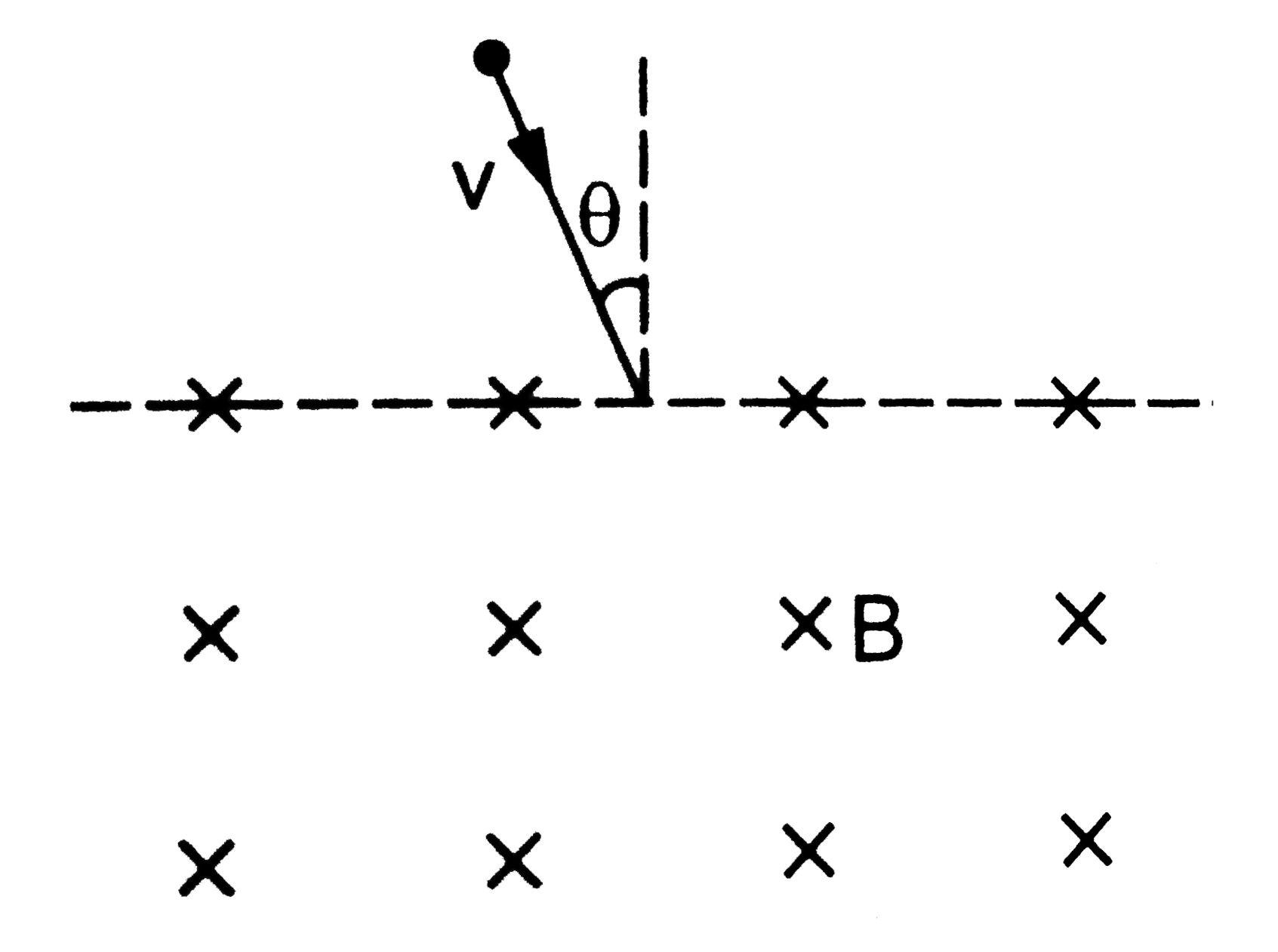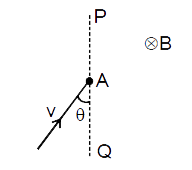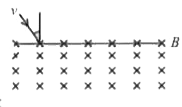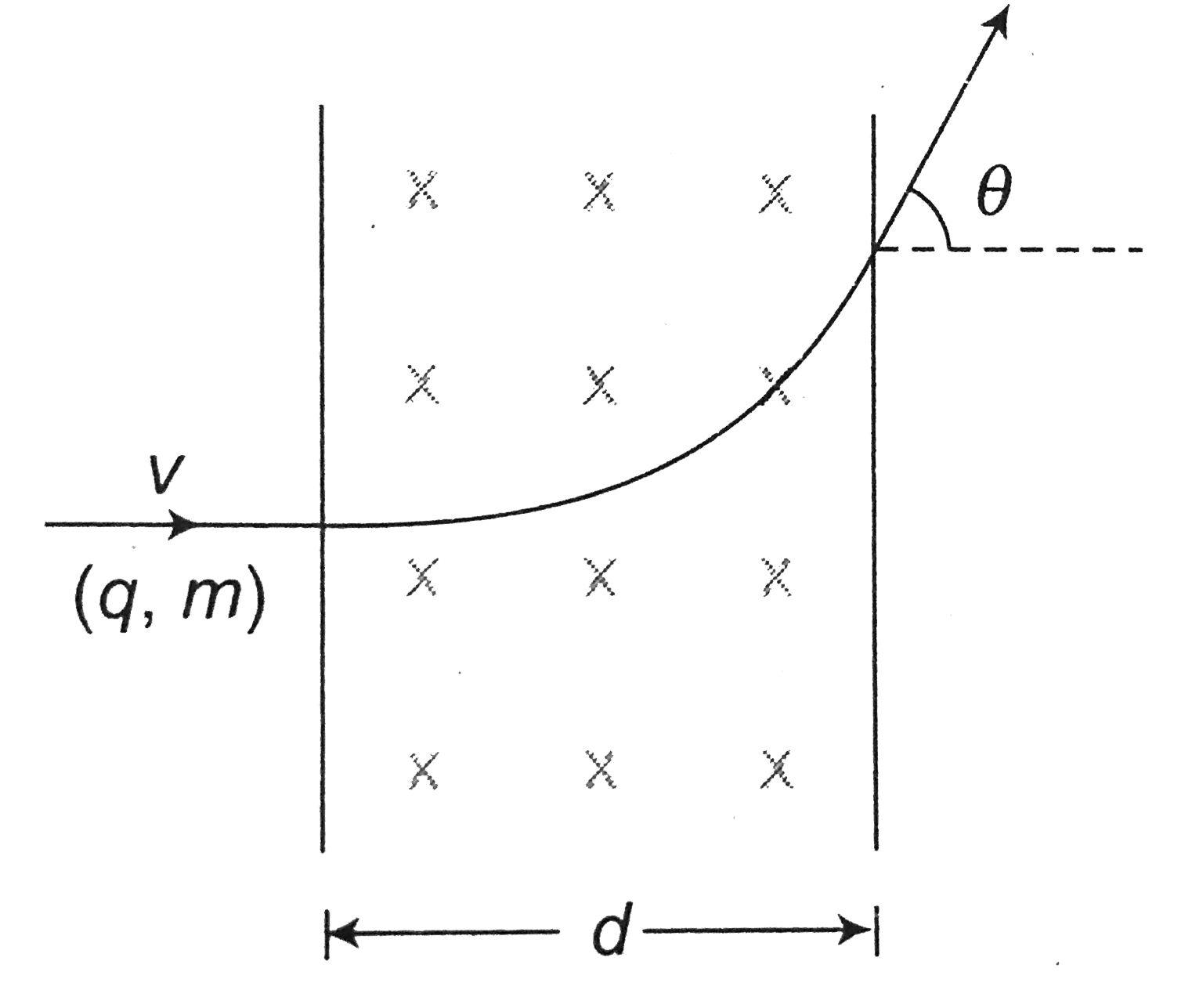A particle of mass m and positive charge q, moving with a uniform velocity v, enters a magnetic field B as shown in (a) Find The radius of the circular arc it describes in the magnetic field. (b) find the angle subtended by the arc at the center. (c ) How long does the particle stay inside the magnetic field? (d) Solve the three parts of the above problem if the charge q on the particle is negative.
 Solution in Tamil
Solution in Tamil
(a) Radius of circular are , r = mu/ qB /_MAD = 90^@ Now /_NAC = 90^@ OAC = OCA = q
(c ) Distance covered
(d) If the charge 'q' of the particule is negtive , then
(1) Redius of circular are
(2) In such a case the center of the are will lie within the magnatic field , bence the angle sulitended by the maasure are
(3) Similary the time teken by the
particle to cover the path .
Topper's Solved these Questions
Similar Questions
If a charged particle at rest experiences no electromagnetic force, then electric field in that region
03:34View SolutionFind the range of frequency of light that is visible to an average human being (400nm<λ<700nm)
05:08View SolutionUsing the formulae ((→F)=(→qv)×(→B)andB=(μ0)i2πr,find the SI units of the magnetic field B and the permeability constant
01:23View SolutionA particle of mass m and charge +q enters a region of magnetic field with a velocity v, as shown in Fig. 1.93. a. Find the angle subtended by the circular arc described by it in the magnetic field. b. How long does the particle stay inside the magnetic field? c. If the particle enters at E, what is the intercept EF?
View SolutionA positive charge particle of charge q and mass m enters into a uniform magnetic field with velocity v as shown in Fig. There is no magnetic field to the left of PQ. Find (a) time spent, (b) distance travelled in the magnetic field, (c) impulse of magnetic force.
05:54View SolutionA particle of mass m and charge q enters a magnetic field B perpendicularly with a velocity v , The radius of the circular path described by it will be
04:08View SolutionA charge particle of charge 'q' and mass 'm' enters in a given magnetic field 'B' and perpendicular to the magnetic field as shown in the figure. It enters at an angle of 60^(@) with the boundary surface of magnetic field and comes out at an angle of 30^(@) with the boundary surface of the magnetic field as shown in the figure. Find width 'd' in which magnetic field exist.
View SolutionA charged particle is moving on circular path with velocity v in a uniform magnetic field B, if the velocity of the charged particle is doubled and strength of magnetic field is halved, then radius becomes
View SolutionA positive charge particle of charge q, mass m enters into a uniform magnetic field with velocity v as shown in the figure. There is no magnetic field to the left of PQ. Find

time spent04:50View SolutionA positive charge particle of charge q, mass m enters into a uniform magnetic field with velocity v as shown in the figure. There is no magnetic field to the left of PQ. Find distance travelled in the magnetic field
03:19View SolutionA positive charge particle of charge q, mass m enters into a uniform magnetic field with velocity v as shown in the figure. There is no magnetic field to the left of PQ. Find impulse of magnetic force.
View SolutionA particle moving with velocity v having specific charge (q/m) enters a region of magnetic field B having width d=3mv5qB at angle53∘ to the boundary of magnetic field. Find the angle θ in the diagram.
 02:14View Solution
02:14View Solutionद्रव्यमान m तथा आवेश q का एक कण एक चुम्बकीय क्षेत्र B में v वेग से लम्बवत रूप से प्रवेश करता है इसके द्वारा बने वृत्ताकार पथ की त्रिज्या होगी
04:14View SolutionA charged particle of charge q and mass m enters a magnetic field as shown. Find radius of the circular path and the time spent inside the field. Neglect gravity.
 02:29View Solution
02:29View SolutionA charged particle (q,m) enters perpendicular in a uniform magnetic field B and comes out field as shown. Find the angle of deviation θ for particle to cross magnetic field will be
 04:27View Solution
04:27View SolutionA charge particle of charge 'q' and mass 'm' enters in a given magnetic field 'B' and perpendicular to the magnetic field as shown in the figure. It enters at an angle of 60^(@) with the boundary surface of magnetic field and comes out at an angle of 30^(@) with the boundary surface of the magnetic field as shown in the figure. Find width 'd' in which magnetic field exist.
07:46View Solution

